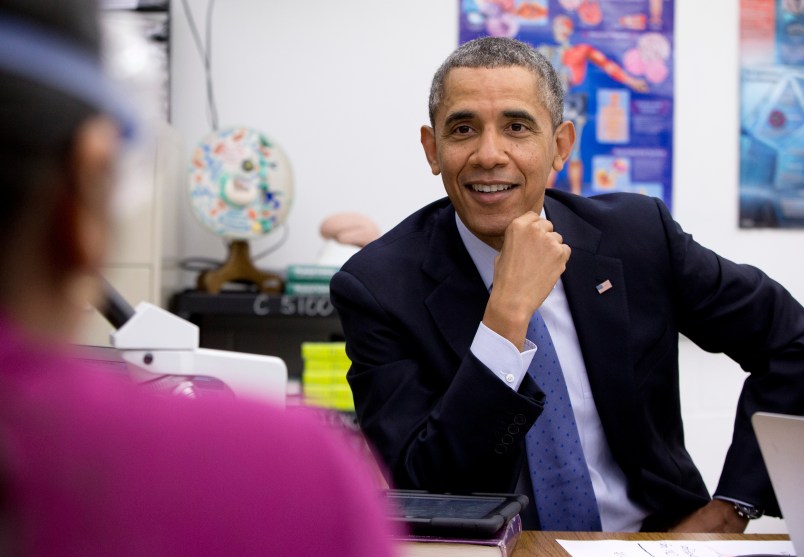In a historical aberration, out-of-pocket spending on health care is expected to decrease in 2014, according to a new report from the Centers for Medicare and Medicaid Services, because of expanded insurance coverage under Obamacare.
CMS actuaries, writing in Health Affairs, projected that Americans’ out-of-pocket spending would decrease by 0.2 percent. While that’s a small drop, it’s a big change from the historical trend of steadily increasing out-of-pocket spending. Out-of-pocket spending increased by 3.2 percent in 2013. According to the Kaiser Family Foundation’s Larry Levitt, such spending has only decreased in 1967 (Medicare and Medicaid took effect) and in 1994 and 2009 under slowing economies.
The cause this year is Obamacare.
CMS said the decline would occur “largely because of expanded insurance coverage through Medicaid and the (insurance) Marketplaces.” They also credited the cost-sharing subsidies available to Obamacare enrollees below 250 percent of the federal poverty level.
“This expected decline in out-of-pocket spending is a direct result of the Affordable Care Act, increasing coverage and decreasing what people have to pay themselves directly for medical care,” Levitt told TPM with one caveat: “This does not include premiums that people have to pay.”
Premiums are projected to grow at a 5.4 percent rate from 2013 to 2023, according to CMS, the result of faster economic growth and increased use of medical services. The previous average was 3.2 percent from 2009 to 2013.
Out-of-pocket spending growth is expected to increase again, at a “relatively low” 2.3 percent rate in 2015 and up to a peak of 5.8 percent in 2020, according to CMS. But the overall out-of-pocket picture still looks like an improvement from the status quo: The agency projects that out-of-pocket spending will decline as a share of overall spending to 9.9 percent in 2023 from 11.7 percent in 2013.
Again, CMS attributed that decline in out-of-pocket spending as a share of overall spending, “in part as a result of expanded coverage under the ACA.” Out-of-pocket spending has been decreasing as a share of overall spending for some time, Levitt said, but Obamacare should accelerate the trend.
Overall, the agency projected that U.S. health spending would grow at an average rate of 5.7 percent through 2023. That’s because of an expected increase in the later years, as more baby boomers enroll in Medicare and the economy improves. As a share of the U.S. gross domestic product, health care spending is projected to increase from 17.2 percent in 2012 to 19.3 percent in 2023.
CMS did note, however, that the 5.7 percent average growth rate was lower than the average annual 7.2 percent growth between 1990 and 2008.







Bravo and well done, Democrats!! And not a single GOPer can take any credit… because not a single one would vote for Obamacare. Because … why, again? Because of the psychotic Koch Brothers driven a monomaniacal phobia of socialism.
Yeah, it’s now out-of-the taxpayers’-pocket. If the administrative,
legal, and fraud costs were included, health care spending has
NEVER been higher. ACA has been a bonanza for lawyers,
lobbyists, “navigators” and incompetent IT specialists.
Provide some real numbers (if you can) to back that up.
You seem to have forgotten your citations. I’m sure you will be correcting that oversight momentarily.
It’s hard to lose, isn’t it? So sorry.